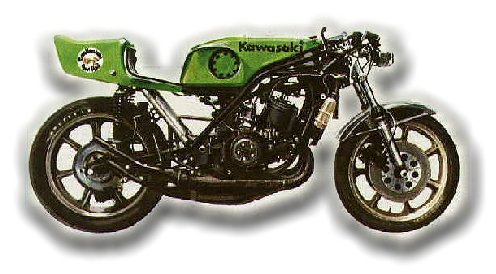
The Kawasaki KR 750
The Kawasaki 750, like the Suzuki 750, was built exclusively
for winning the Daytona 200 Mile. This new Kawasaki was
the racing version derived from that miracle of power and
acceleration that was normally sold around the world, the
Kawasaki Mach IV 750 or H2.
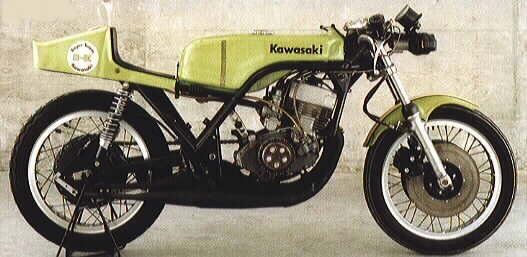
the air-cooled triple H2R
Bob Hansen's American team rode the Kawasaki 500 H1R
Daytona in 1971. The motorcycle was very fast but still
slightly inferior in performance to the BSA-Triumph 750
and the Suzuki Titan-Daytona 500.
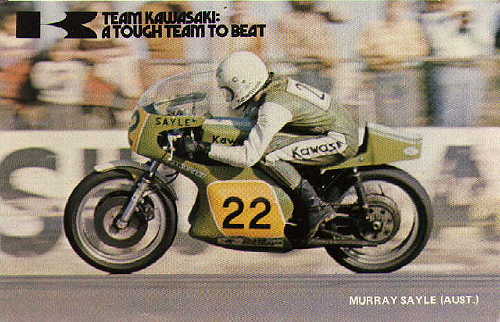
Murray Sayle for Team Kawasaki Australia
In 1972 Hansen's team pitted the brand-new Kawasaki
750 against the equally new Suzuki TR750. The Kawasaki H2R
750 had a two-stroke, three-cylinder transverse inline engine.
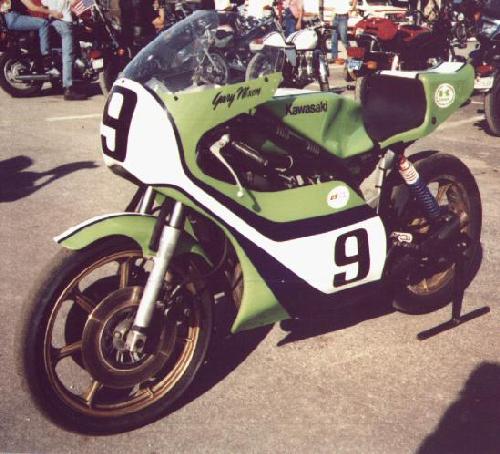
Gary Nixon's Daytona 750 H2R
The Kawasaki and the Suzuki were closely matched in
power, having about 100 h.p.
at 9,000 r.p.m. The Kawasaki 750 had 27 h.p. more than
the old H1R 500.
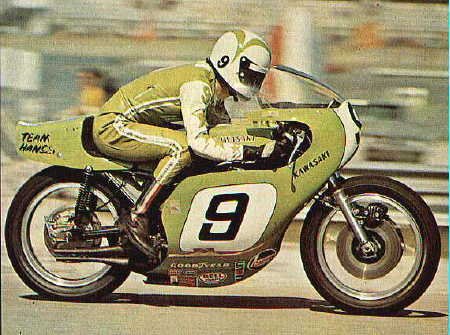
Team Hansen H2R
Both Suzuki and Kawasaki experienced a host of problems
at Daytona -chiefly with tires and chains, which had trouble
standing up to the power of the engines.
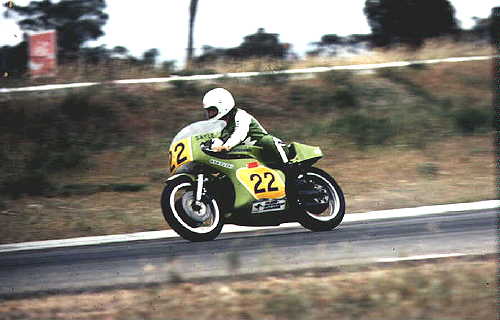
Murray sayle at Wanneroo on the H2R
Not until late in the season were the two most powerful
motorcycles in the world sufficiently well tuned. Paul Smart,
a British racer, rode the Kawasaki to its first important
win at Ontario and received the handsome sum of $25,000
in prize money.
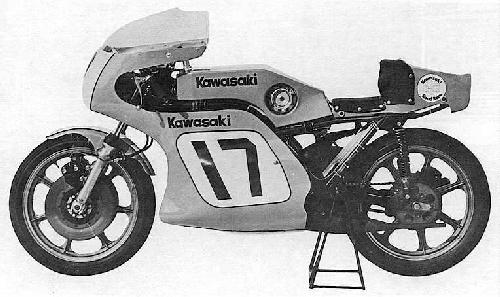
later model H2R
This decisive victory encouraged the Kawasaki people
to try to improve the H2R. In 1973 the Kawasaki H2R 750
stood ready at the starting line of the Daytona 200. It
was the fastest bike in the field but had to withdraw with
engine troubles. The official riders of the Hansen team,
Art Baumann and Yvon Du Hamel, were sent to Europe to try
their luck at the Imola 200 Mile race, but they had more
bad luck. Baumann was in second place behind Jarno Saarinen
for some time. After this promising beginning he fell and
had to pull out of the race. Du Hamel, who was racing as
usual with the number 17, stopped at the pits for refueling.
His motorcycle caught fire, which prevented him from returning
to the race.
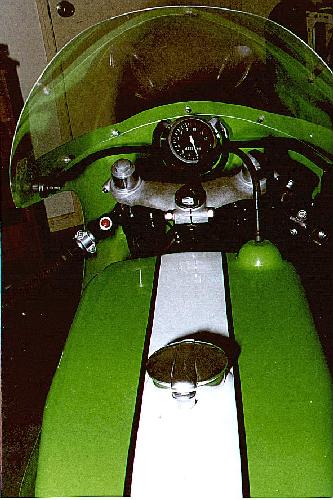
tank and instruments of a H2R
Bad luck dogged Kawasaki all season long. It lost the
1973 FIM Cup to Suzuki. In 1974 it had to face the new four-cylinder
in-line Yamaha TZ700/750, which started chalking up victories
at once.
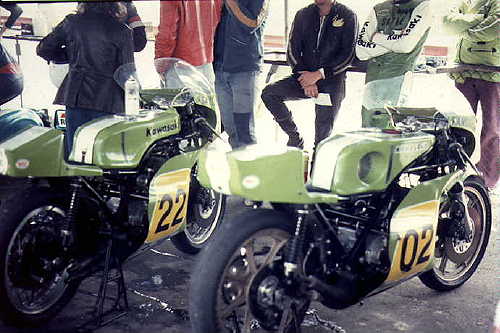
In the pits at Wanneroo Western Australia 1975. Hansford's
KR750 and Sayles H2R
The following year the H2R was given water cooling and
a new chassis in the hope of closing the gap. Despite an
increase of 15 h.p., the KR750 never managed to give Kawasaki
the consistent winning performance it had always promised.
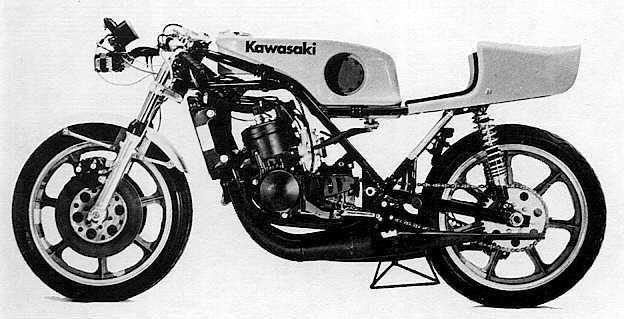
the water-cooled KR750
In Australia, under the mangement of Neville Doyle,
the Kawasaki Green Meanie racing team went on to a superb
series of victories dominating the class during the mid
70s. Several riders were to prove their excellence aboard
the green meanies including Ron toombs (later sadly killed
at Bathurst, though not on a Kawasaki), Greg Hansford (
who later went onto success in the GPs on the KR250 and
KR350, although he sadly was also recently killed racing
a car at Phillip Island.) Greg had some success on the H2R
and KR750 at Daytona as well. Another good rider on the
H2R was Murray Sayle.
Displacement 748.2 cc. (71 mm.x63 mm.)
Power: 115 h.p.
Maximum speed: Over 185 m.p.h.
Chassis: Double cradle, continuous, tubular. Front and rear, telescopic
suspension
Brakes: Front, double hydraulic disk; rear, hydraulic disk

